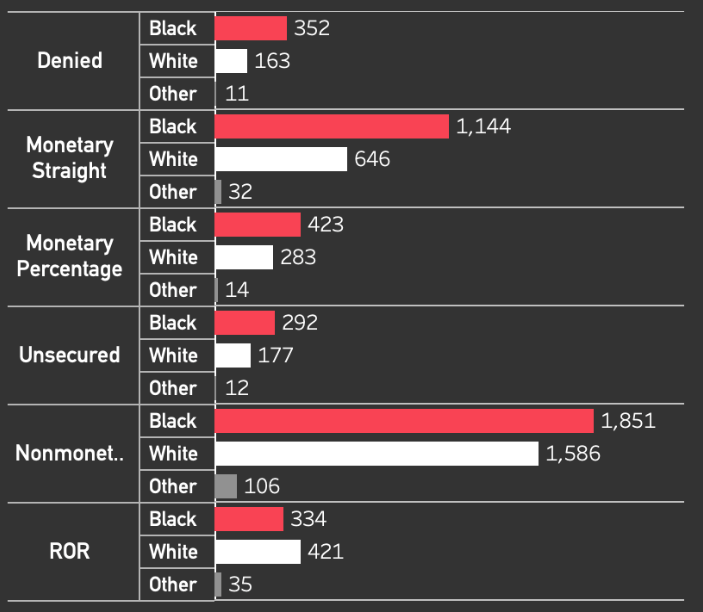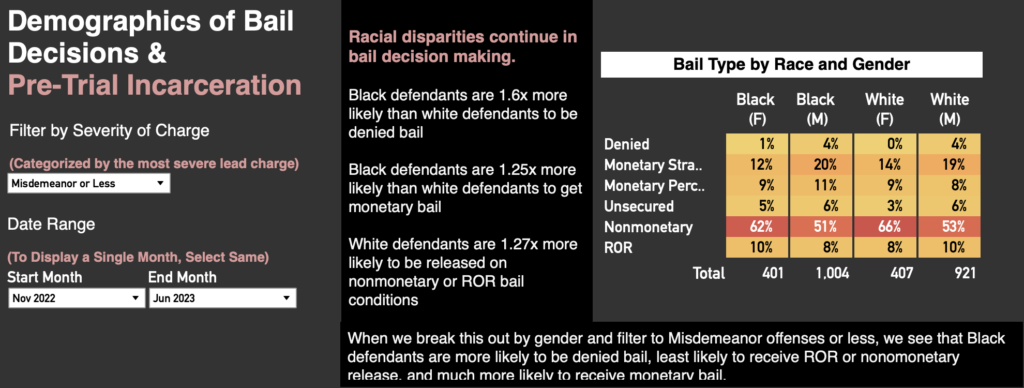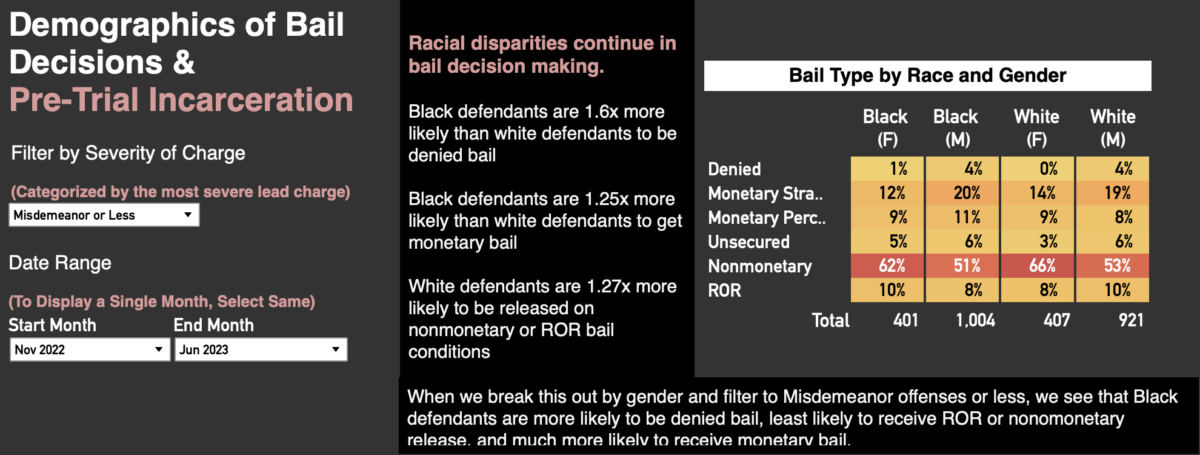June 8, 2023
CLICK HERE TO VIEW THE FULL PRE-TRIAL ARRAIGNMENT DATA DASHBOARD
A Window of Accountability on Magisterial District Judge Bail Decisions
Senior Judges See More Cases, Set Harsher Bonds
7 out of top 10 judges with the highest numbers of defendants held pretrial are senior judges (below). The PA Constitution requires judges to retire at 75, but the state court administrator allows judges to continue on as senior judges.

Because senior judges oversee more arraignments, and tend to preside during night court where fewer parties are present, you are more likely to encounter a senior judge, who more likely has a harsher bail setting track record, with high rates of setting monetary bond or denials.
Judges running for re-election*
Magisterial district judges’ races seldom dominate election coverages — yet these races are one of the few opportunities to hold judges accountable for their actions. New candidates entering the race for magisterial district judge seats should have a platform on reducing the likelihood of pre-trial incarceration by denial or by money bail, and displaying judge bail decisions allows judges to remain accountable to the public.
During our dashboard launch, we found that 3 of the 12 judges running for re-election had some notable patterns:
Out of all judges running for re-election in 2023,* Daniel E. Butler had the highest numbers of people sent to jail pre-trial at 99, due to his high rate of setting monetary bail. Carolyn S. Bengel had the highest rate of sending people to jail pre-trial at 59% of arraignments, with a high denial rate alongside a high monetary bail rate. Carla M. Swearingen-Batch had the highest rate of setting monetary bail at 58% (the third highest of all judges), with a total of $1.5M in bail set.

Demographics of Bail Decisions
Type of Bail Set by Race*
Racial disparities continue drastically in bail decision making, contributing to an ongoing cycle of deprivation and violence. The statistics are stark — if you showed up as a defendant to a preliminary arraignment, you would be 1.6x more likely to be denied bail if you were Black than if you were white. Likewise, you would be 1.25x more likely to get monetary bail (unsecured or secured full/straight or secured percent) as a Black person than a white person. However, if you were a white defendant, you would be 1.27x more likely to be released on nonmonetary or ROR bail conditions than a black defendant.

Monetary bail remains the highest cause for being held in jail. 80% of those held in jail for any length of time are held due to monetary bail. Black defendants facing higher likelihoods of monetary bail also face higher rates of pretrial incarceration.
Bail Amounts (Total, Average by Race)*
Rates of monetary bail are also inequitable by race. Black defendants have a 34% higher bail than white defendants, with the average bail of $22,473 compared to an average of $16,751 for white defendants. The judges with the highest counts of people sent to pre-trial incarceration — Robert Paul Dzvonick, Eileen M. Conroy, Thomas S. Brletic, Craig C. Stepehens and Robert Ravenstahl Jr. — have also significantly higher average bail for Black than white defendants.

*These insights taken from preliminary arraignments from 6/1/22 to 03/31/23).
Definitions
Denied bail results in no possible release. Denial of bail can be based on a number of factors, including one’s criminal record, perceived threat to the community — which can often be related to mental illness — flight risks, and the severity of charges brought against the defendant.
Unsecured monetary bail imposes no immediate cost on the defendant and therefore permits release from custody, but there is a potential cost should the defendant fail to appear in court. Defendants promise to both comply with the judicially-determined non-monetary conditions of bail and appear in court for their scheduled hearing, or else be subject to a potentially hefty financial cost.
Secured monetary bail requires defendants to pay all or a portion of the bail in order to be released from custody during the pre-trial period. There are two forms of secured monetary bail: monetary percentage bail, and non-percentage (full or ‘straight’) monetary bail.
The percentage version of secured monetary bail typically requires the defendant to pay 10% of the bail set by the judge as a condition of release. If the defendant then appears in court as scheduled, the money is returned to them. In order to be released, they must have access to the ten percent upfront, whether it is their own money, that of their friends/family, or from a professional bail bondsman, who charges an unrecoverable percentage fee.
Non-monetary bond: A nonmonetary bond is set with certain conditions of release set by the judge, with no requirement to post any money.


